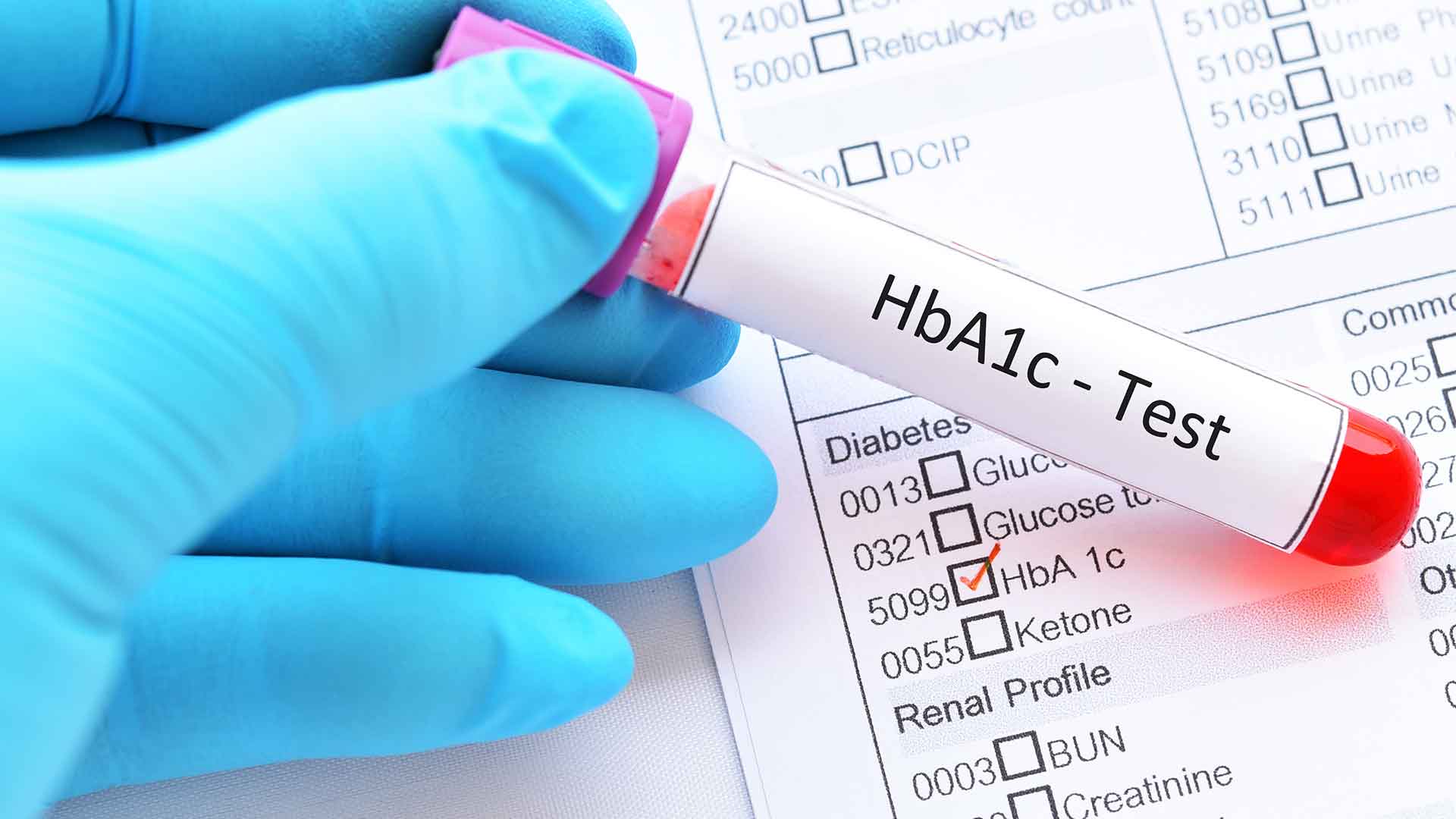Whether you’ve just been diagnosed with diabetes, have been living with type one for a while, or are the parent or guardian of a child with diabetes, you’ll already be very aware of the need for regular blood tests.
One of the most important tests for type 1 diabetes is hemoglobin A1c – often shortened to ‘HbA1c’ and sometimes lengthened to “glycated hemoglobin’.
It’s worth knowing more about the HbA1c test, as results give people with diabetes a much broader overview of how their blood glucose is responding to treatment. Doctors in particular use HbA1c results as a diagnostic tool, or as the primary guide for insulin dosage and other diabetes-related decisions.
Hemoglobin A1c isn’t measured in the same way as interstitial glucose is measured on a continuous glucose monitor. While finger prick tests and continuous glucose monitoring (CGM) sensors are extremely important for measuring real-time sugar levels, someone with diabetes can’t rely on these results alone. In short, there’s no getting away from intravenous blood tests like HbA1c.
What is A1C or HbA1c?
Hemoglobin A1c is the gold standard in blood glucose measurement both for PWD and people suspected of having or developing diabetes.
A slightly raised HbA1c result can indicate pre-diabetes or insulin resistance. With type 1 diabetes, where little to no insulin is produced, pre-treatment results are often spectacularly higher. We’ll look at different HbA1c values later.
As a diagnostic test, HbA1c gives a very reliable indication of long-term blood sugar levels. A finger-stick test only measures the quantity of glucose in the capillary blood at a single moment.
The continuous glucose monitoring sensor measures the quantity of glucose in the interstitial fluid of the arm, abdomen, or upper buttocks (primary approved sensor sites) at any one time. For type 1 diabetics, these values are vital as they are the best indicators for bolus insulin dosage.
HbA1c, on the other hand, looks in detail at our red blood cells. Why?
The word hemoglobin refers to the biggest part of red blood cells. In fact, hemoglobin makes up 96% of every red blood cell’s total weight. It’s a group of four protein chains that surround a single ‘ion of iron’.
We need hemoglobin to transport oxygen through the bloodstream. Hemoglobin can be compared to oxygen-carrying container trucks on public road systems, bringing life-giving oxygen to individual addresses (cells) all around the body.
It’s the iron that makes it possible for oxygen to attach to hemoglobin proteins. This explains why people with severe anemia often feel breathless, as too little iron means a lack of oxygen-binding power.
Sugars can also attach to hemoglobin in the bloodstream, but to a much lesser extent than it does with oxygen. There’s also no need for iron. In fact, the less iron you have in your blood, the more sugars will attach to your hemoglobin. And, of course, the more sugar there is floating around in the blood, the more sugars will attach to hemoglobin, too. This partially explains why people with anemia and diabetes often have much higher HbA1c values than diabetics without anemia.
The carbohydrates we eat must be broken down to their simplest forms before they can slip into the capillary walls and enter the bloodstream. The simplest forms of carbohydrates are glucose, galactose, and fructose. All of these ‘simple sugars’ are present in very small quantities in our red blood cells, even when we don’t have diabetes.
When a glucose molecule attaches to hemoglobin, that hemoglobin becomes glycated. And it’s this glycated hemoglobin that a laboratory measures when you or your child’s diabetes specialist requests an HbA1c blood test.
How Often Should You Get the A1C Test Done?
The reason all specialists request A1c blood tests every 3 months is because the average age of a red blood cell is 115 days. If blood sugar results are stable, the HbA1c test frequency might be extended to every 6 months.
In general, you can expect the following:
| Situation | A1c Test |
|---|---|
| Children up to 16 years | Every 3 months |
| New diabetes diagnosis | Every 3 months |
| Unstable daily glucose curve | Every 3 months |
| Additional (non-diabetic) medication | Every 3 months |
| Long-term illness (more than 3 months) | Every 3 months |
| Adults with stable daily glucose curve without illness or medication changes | Every 6 months |
What’s a Healthy A1C range?
Someone without diabetes or prediabetes should expect HbA1c values of between 4 and 5.6% (3.8 – 6.3 mmol/liter or 20.2 – 37.7 mmol/mol). This means that between 4 and 5.6% of selected chains of hemoglobin in red blood cells are attached (glycated) to glucose. As mentioned earlier on, some glucose always attaches to a small percentage of red blood cells, even in non-diabetics.
An HbA1c result of over 6.5% (7.8 mmol/L or 47.5 mmol/mol) indicates diabetes. However, results under 9% (11.7 mmol/L or 74.9 mmol/mol), especially in children, nearly always indicate type 2 diabetes. Most type 1 diabetes diagnoses show glycated hemoglobin levels of over 9%. This is because little to no insulin is being produced.
However, high HbA1c results do not rule out the possibility of type 2 diabetes. Tests for autoantibodies help show which type of diabetes should be diagnosed.
Most doctors agree that children and adults with type 1 diabetes should strive for HbA1c values of under 7.5% (9.4 mmol/L or 58.5 mmol/mol).Between visits to the doctors office for A1C tests, you can also monitor your Glucose Management Indicator (GMI). The GMI is a statistical calculation that is based on CGM readings over at least 14 days. It does not require a blood draw. Though there are important differences between the two indicators that we won’t discuss here, GMI is a very handy metric to indicate your level of control between visits. You can read more about it on diaTribe. Using Gluroo, you can see your GMI in the “stats” panel at the bottom of the screen:

You can download Gluroo for free today by visiting the links below:
Tips on How to Stay Within Your Target A1C Range
A diabetes care team will be happy to share a whole range of tips and tricks that help bring HbA1c levels down. Generic online advice isn’t always backed by research, and supplements or dietary plans like intermittent fasting should never be initiated without the knowledge and approval of your or your child’s diabetes specialist.
Methods to lower HbA1c levels in type 1 diabetes that are backed by experts in this field, as well as plentiful research, are:
- Reducing intake of simple carbohydrates (sugar)
- A varied, non-processed, natural diet
- Regular, small meals instead of intermittent, large meals
- Losing weight if necessary
- Gentle to mid-level exercise regularly
- Reducing stress levels
- Insulin pump therapy
- Continuous glucose monitoring
- Increasing knowledge of diabetes
- Learning self-management skills for diabetes
The final three on the above list are more powerful HbA1c-lowering tools than you might think. In fact, research shows a strong association between diabetes education, CGMs, and better diabetes outcomes.
So, when it comes to diabetes, knowledge really is power!




